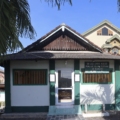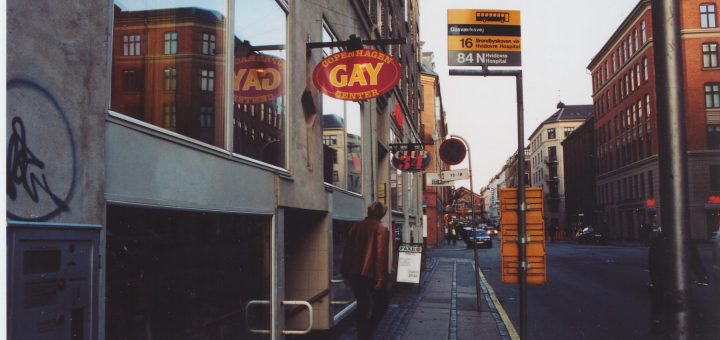Part 1: Touring to Diponggo Village, the Hometown of National Hero Harun Thohir
Five Hours in Ferry
That morning, the sky above Gresik Harbor, East Java, was covered by sheets of white clouds. The clock showed 9:00 AM as the ferry we were on, Express Bahari, slowly began to leave the dock of Gresik Passenger Ferry Port. From the edge of the pier, the officers of the harbor waved their hands to bid farewell as the ship was untying its ropes. I watched them from the glass window next to my seat.
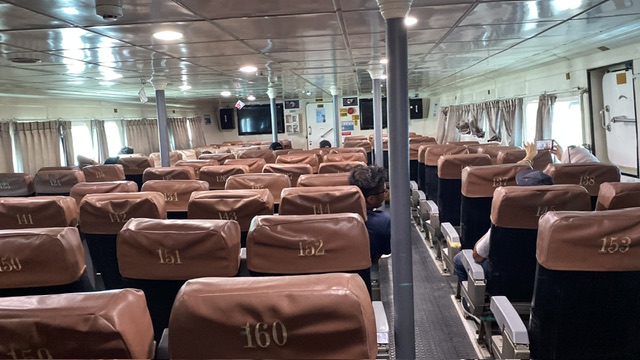
I was on the bottom deck of the ship. The Executive Class passenger area was quite empty, many seats were vacant. “Please feel free to sit anywhere,” said the crew member. I took a seat by the window, while my travel companion, Heni, sat right behind me.
The ship traffic in the waters that is bordered by the Gresik regency to the west and the land of Bangkalan on Madura Island to the east seemed busy. Large vessels, from cargo ships to barges, floated in the water. It was no surprise that the sea looked murky.
The ferry, with a capacity of 250 passengers, was heading toward Bawean Island—our destination. After more than an hour, the ship finally exited the strait, and slowly, the land of Madura and Gresik disappeared from sight.
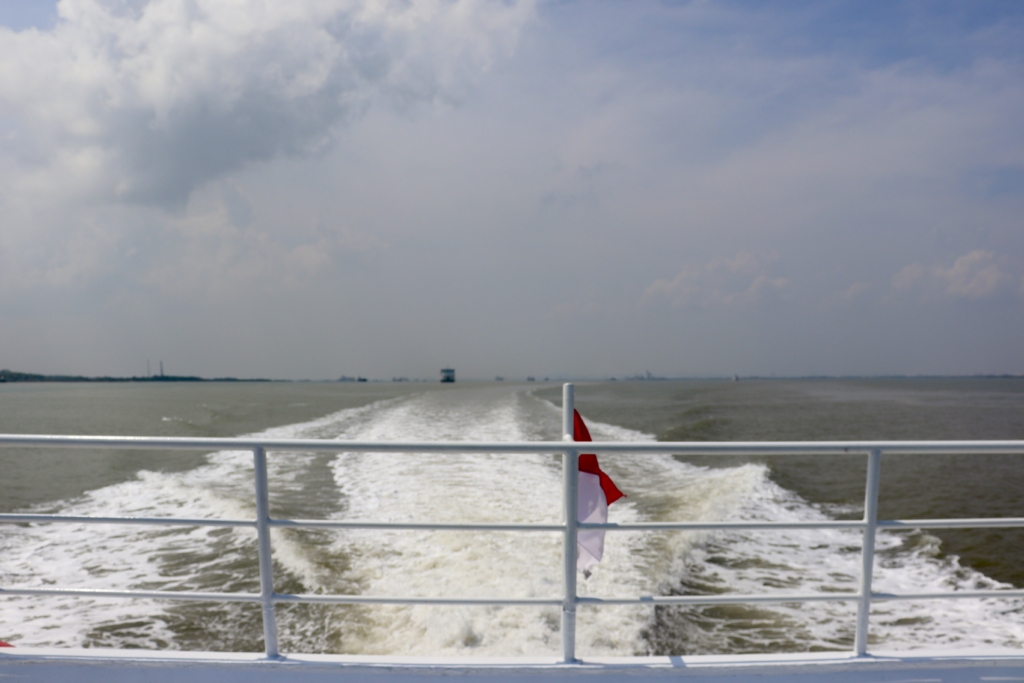
Soon, my skin sensed coldness from the air conditioning. Luckily, I had brought a light jacket to keep me warm. In the distance, I saw grey clouds; I wondered if it was going to rain. Some passengers took seats as if preparing to sleep, and from the belongings they carried, they seemed to be migrant workers returning to their hometowns.
The television mounted on the wall wasn’t broadcasting anything. There wasn’t much we could do other than chat while nibbling on the food we had brought. I managed to fall asleep but woke up when the ship began to sway. Apparently, it had started raining outside. The waves were strong. We entered an area with no phone signal. Outside, all I could see was the grey sky, the crashing waves, and a bit of fog.
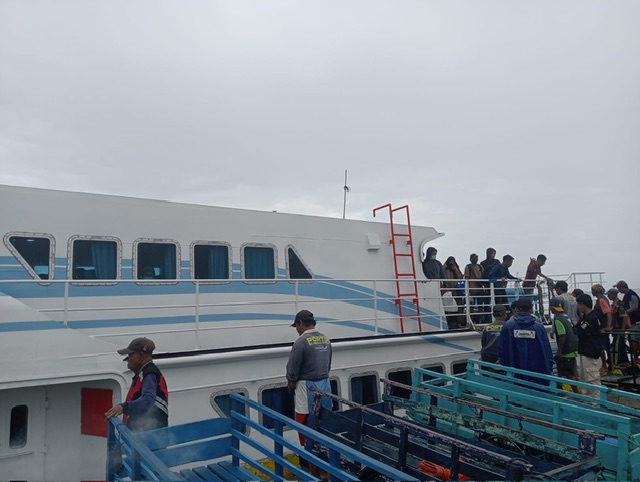
After crossing the sea and being tossed by waves for four hours, our hearts were instantly relieved when we saw land through the glass window. The sea had calmed somewhat, although the clouds still hung overhead. I then contacted my guide, Iswanto, from Baweanis Tour to inform him that we would be arriving soon and to ask for his help in carrying our luggage. Iswanto offered suggestions on places we could visit that day, as the weather had caused some changes to our original schedule.
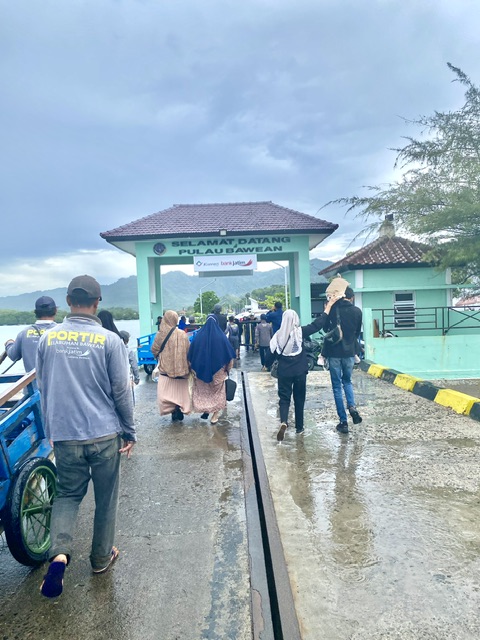
The ferry finally docked at Sangkapura Pier around 2 PM, later than we had expected. Fortunately, the heavy rain that had soaked Bawean Island since the morning had subsided by the time we arrived.
Diponggo: A Historical Village on the Shores
It felt wonderful to step foot for the first time on the island 120 kilometers north of Gresik City. From the pier, a car took us to Penginapan Miranda, where we would spend the night, to drop off our luggage. Since it was already late, Iswanto recommended we have a quick meal.
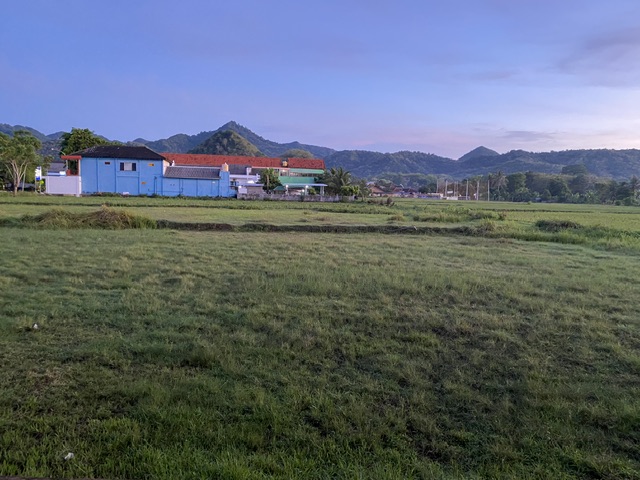
The car’s tires rumbled along the cobblestone roads connecting the island. Iswanto took us to a food stall by the beach, where many vendors had set up. We chose bakso (meatball soup), a warm dish that was perfect after the chill from the boat ride.
Our destination was Diponggo Village, located in the northern part of Bawean Island in the Tambak subdistrict. Bawean Island is divided into two subdistricts: Tambak, which covers the central to northern parts of the island, and Sangkapura, which covers the central to southern regions. During the journey, I was amazed by the houses of the locals, nearly all of which were made of brick. According to Iswanto, many Bawean residents had worked abroad, even to neighboring countries, and their hard-earned money was used to build houses in their hometown. It was no surprise that many of the houses looked luxurious and grand.

“Interestingly, most of the houses are built adjacent to each other. These houses are also located on the roadside, so they do not have yards, except for those in the more remote areas, which have larger plots. The rural landscape of Bawean Island is very unique, with vast rain-fed rice fields, many of which are situated near the edge of the open sea. Occasionally, we passed through a canopy of vegetation dominated by teak forests. The scenery alternated between densely packed residential areas, rain-fed rice fields, forests, and beaches. Throughout the journey, we rolled down the car windows to enjoy the exceptionally fresh air.”
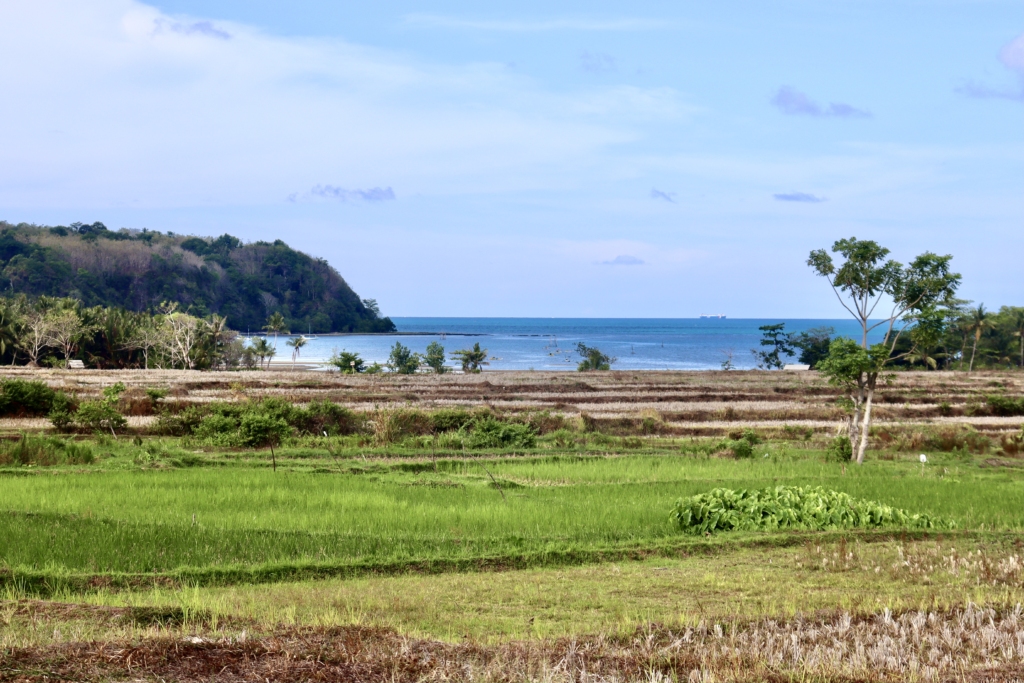
We entered Diponggo, a village located on the shoreline. This village is historically significant as the birthplace of national hero Harun Thohir and the burial site of the highly respected Islamic figure, Waliyah Zainab. According to research by Dr. Agus Sariono, a linguist from Jember University in East Java, Diponggo is the only village among the 30 villages on Bawean Island where the residents speak a variant of Javanese.
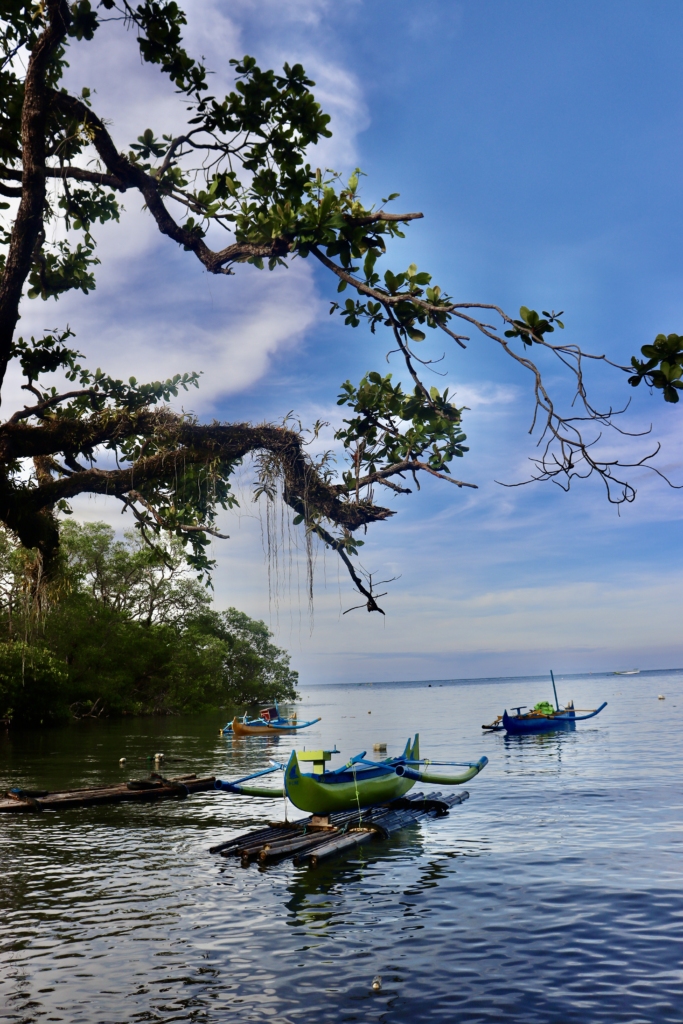
Muhammad Salim, 54 years old, the Head of Diponggo Village, has not been able to determine the origins of the village’s name, Diponggo, which means “great shining king.” The village, home to 1,417 residents, is largely populated by people who work as sailors on foreign merchant ships. “They are adventurous by nature. Most of them migrated to Jakarta in the 1950s and settled in the Tanjung Priok area, working at the port. Harun Thohir moved from Bawean to Jakarta because he had many relatives there,” he said.
Waliyah Zainab
In Diponggo Village, the Waliyah Zainab Mosque stands as the largest mosque in the area. The building has two minarets and is predominantly painted green. Behind the well-maintained mosque lies the tomb of Waliyah Zainab.
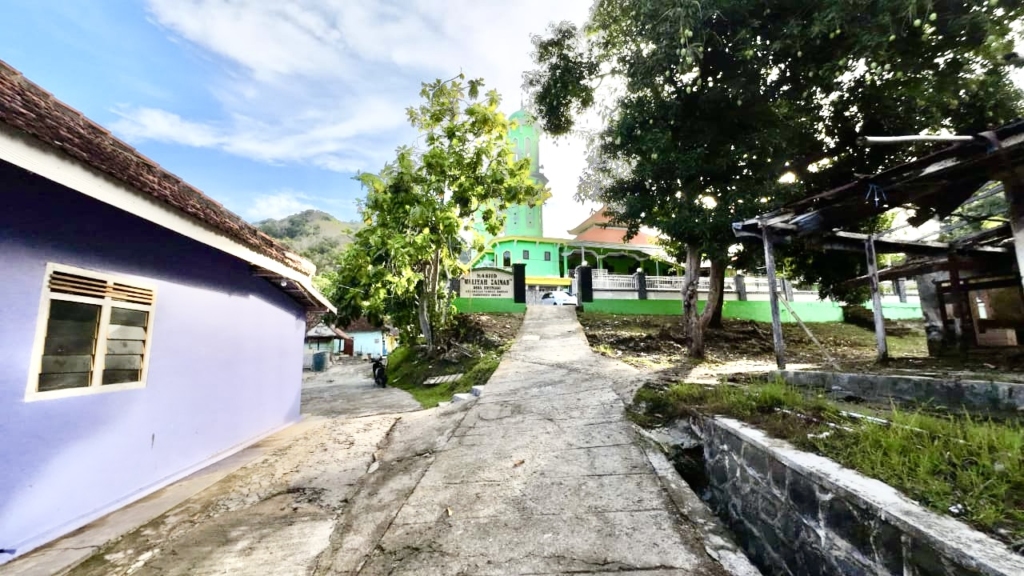
There are various versions of the references about Waliyah Zainab. Based on online literature research, I chose to cite the most frequently quoted sources.
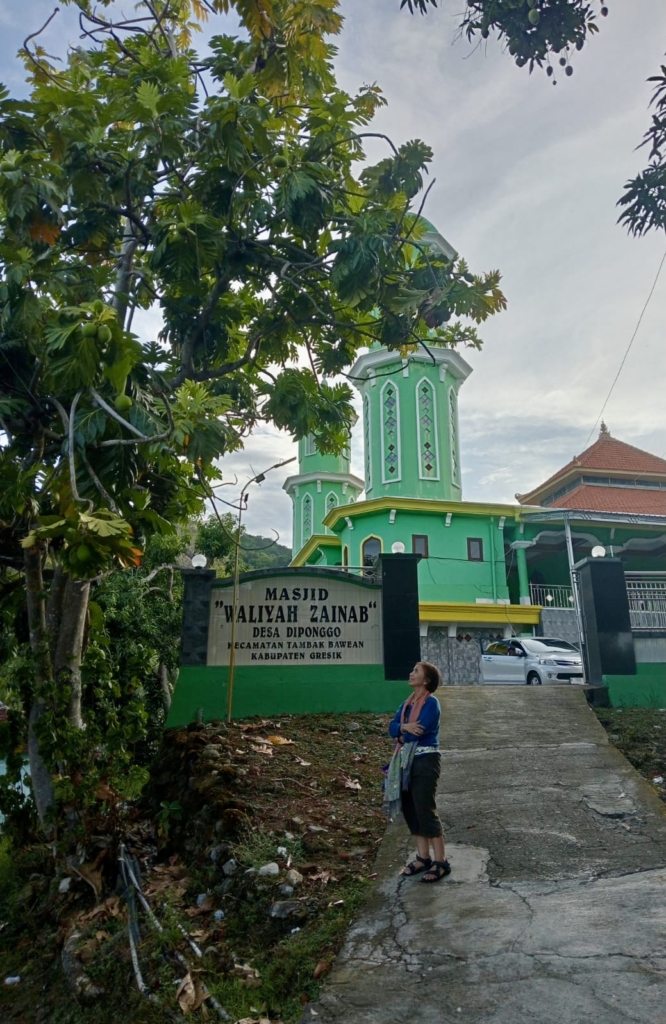
Waliyah Zainab, also known as Dewi Wardah, was the granddaughter of Sunan Sendang Duwur (Raden Nur Rahmat), who spread Islam in the Paciran region of Lamongan, East Java, in the 1500s. She married Prince Sedo Laut, the grandson of Sunan Giri (1442-1506) who founded Giri Kedaton.
At the time, Giri Kedaton, or Kasunanan Giri—a 16th-century Islamic kingdom in Gresik that was affiliated with the Sultanate of Demak—was led by Sunan Prapen, the grandson of Sunan Giri. Sunan Prapen sent his half-brother, Prince Sedo Laut, along with his wife, Waliyah Zainab, to Bawean Island. During their voyage, the ship they were on was struck by powerful waves, and everyone perished except for Waliyah Zainab.
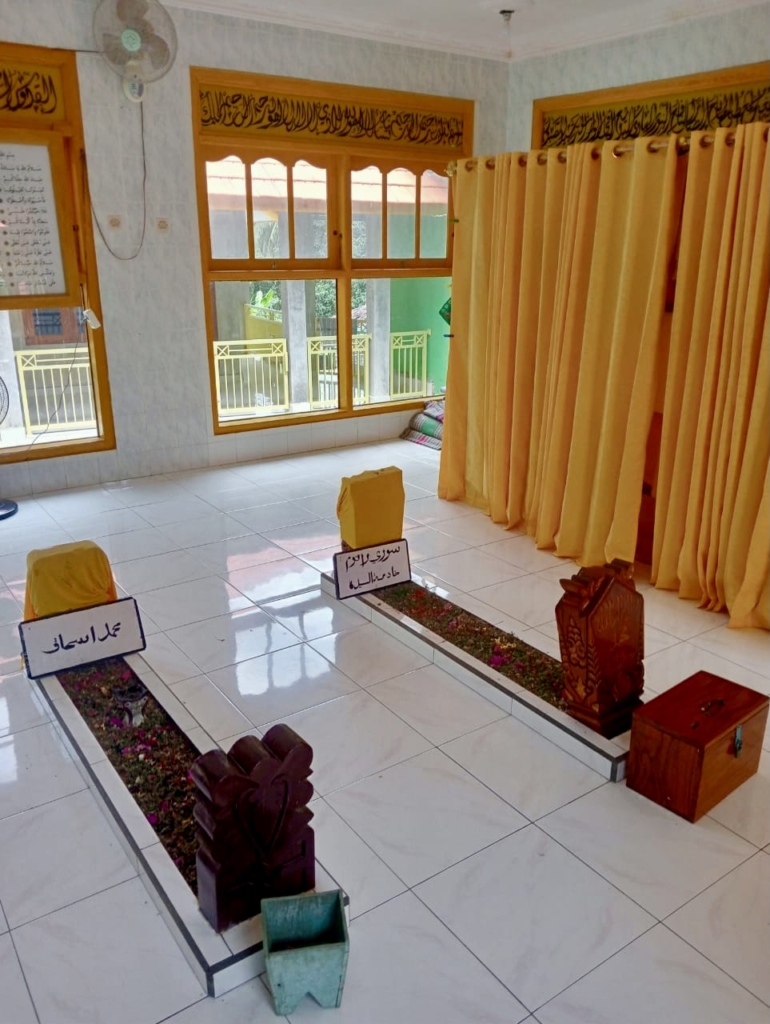
Waliyah Zainab was cast ashore in Kumalasa, on the southwestern part of Bawean Island, but was driven away when she refused the marriage proposal of a local port master. She eventually found a region that is now known as Diponggo Village, where the villagers welcomed her with open arms. Waliyah Zainab lived there until her death. The mosque that now stands there is said to have originally been established by her. Some references suggest that Waliyah Zainab practiced the teachings of Sheikh Siti Jenar.
A tradition still practiced by the residents of Diponggo Village in connection with Waliyah Zainab is Puyahale. “The Puyahale tradition is a ritual to ward off evil or to protect the village from any form of danger, ensuring peace and harmony for the villagers,” explained Muhammad Salim.
This tradition takes place every month of Muharram on a Monday or Thursday. During Puyahale, the men of the village walk around Diponggo, carrying the heirlooms of Waliyah Zainab while reciting zikr (remembrance of God) and praises. The event begins after the Zuhr prayer at the Waliyah Zainab Mosque and ends at the same location. The walk around the village takes about two hours, which is why the villagers also refer to this tradition as Zikr midher.
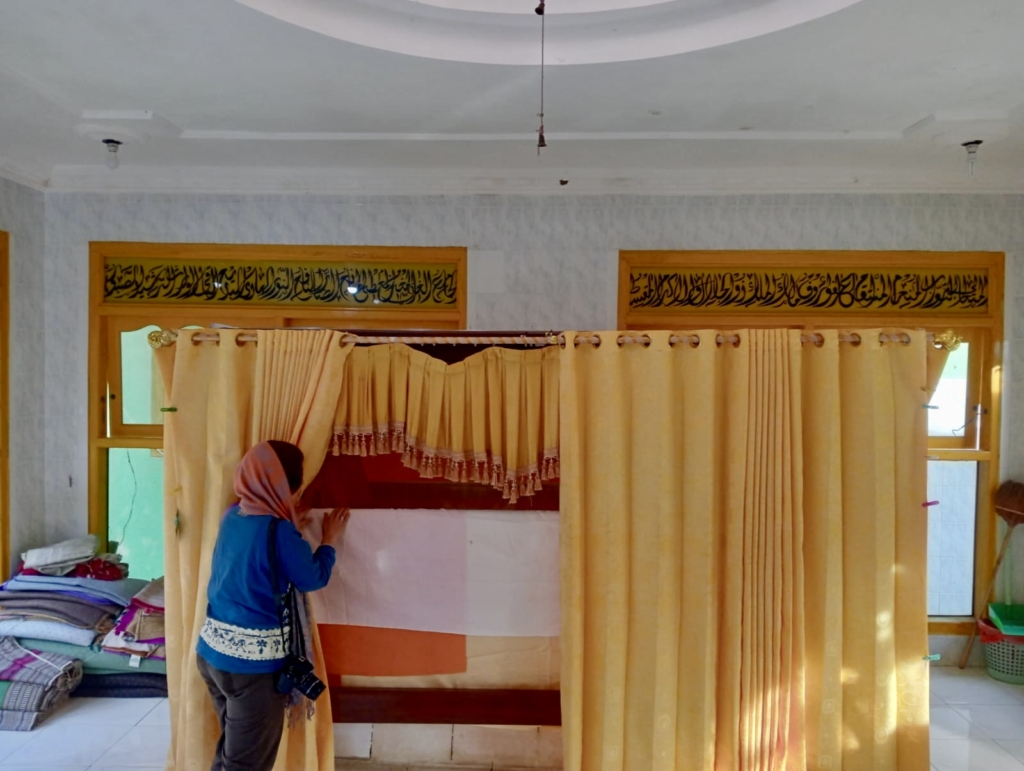
The tomb of Waliyah Zainab, managed by the Waliyah Zainab Foundation, is located behind the mosque. The tomb is housed in a room that is locked tightly. Iswanto opened the door for us to enter the room, which was predominantly painted in dark yellow. Inside, there are two other tombs, which are possibly those of people close to Waliyah Zainab.
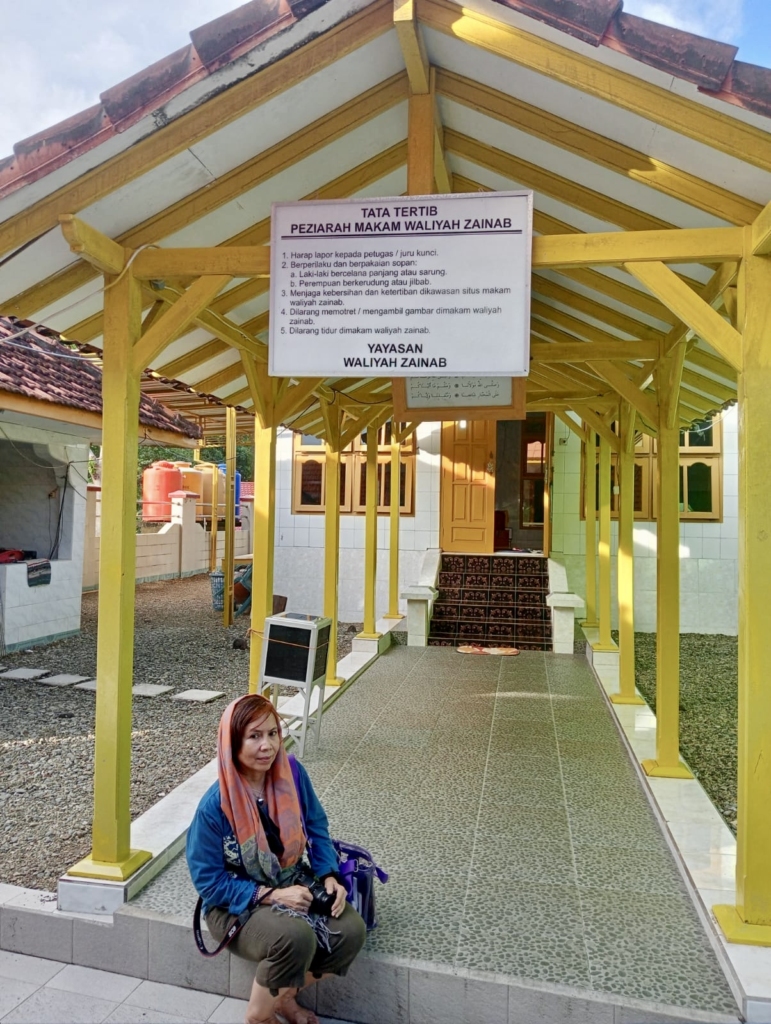
In front of the tomb room is a pavilion, usually used by the villagers for religious events. Adjacent to it, enclosed by a wall, is a large cemetery that serves as the village’s public burial site.
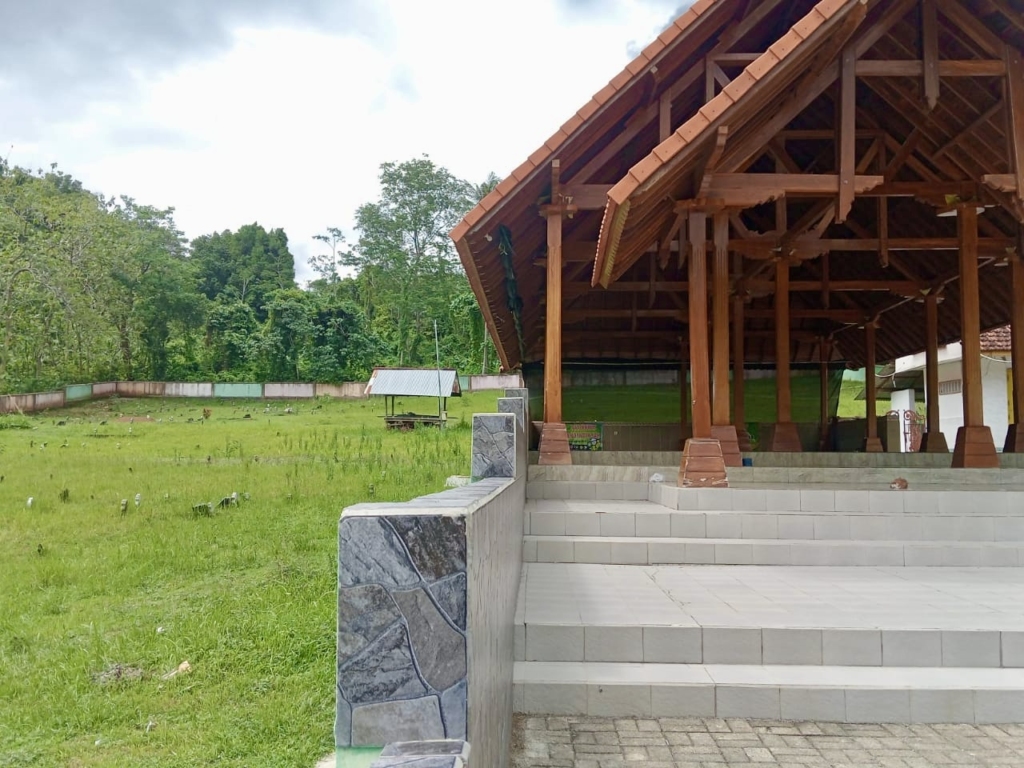
National Heroes Usman and Harun
The names of Sergeant Major Usman Janatin Bin Hj Mohd Ali and Corporal Harun Thohir, known as Usman-Harun, remain etched in the memory of Indonesia’s modern history. Both were soldiers in the Command Corps (now the Marine Corps) of the Indonesian Navy, who were executed by hanging by the Singaporean government on October 17, 1968. They were found guilty by court trial for carrying out a bombing at the MacDonald House in Orchard Road, Singapore, on March 10, 1965.
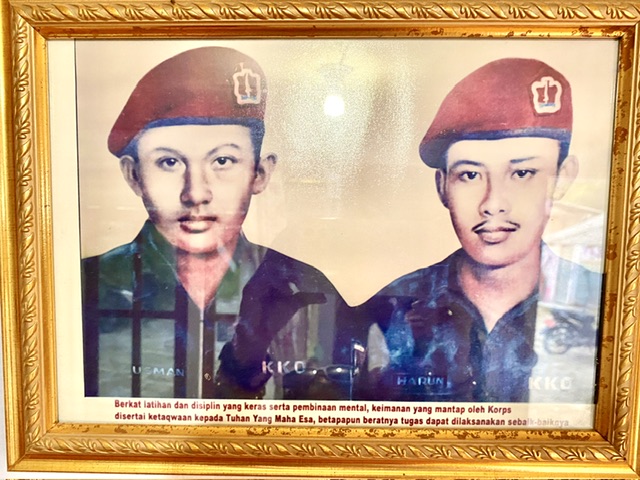
Usman Janatin, Harun Thohir, and Gani bin Arub—who managed to escape capture—carried out the bombing on behalf of the Indonesian state. At that time, under President Sukarno’s leadership, Indonesia opposed the merger of the Federation of Malaya, Singapore, Brunei, Sarawak, and Sabah into Malaysia, fearing that it was a form of neo-colonialism.
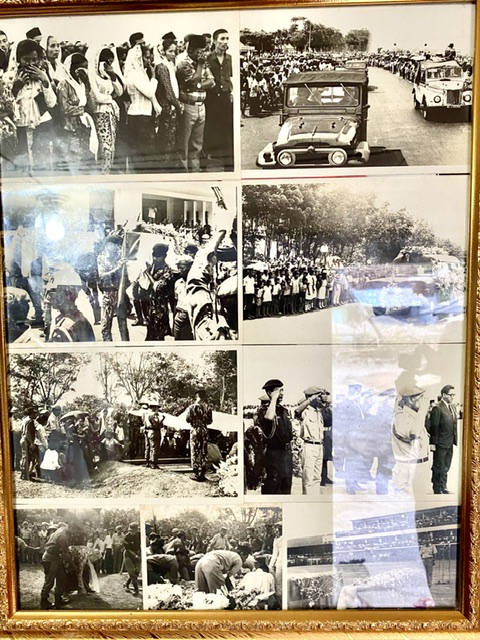
At their trial, Usman and Harun requested to be treated as prisoners of war, but their request was denied. On October 20, 1965, the court sentenced them to death. The Indonesian government filed an appeal in London, as Singapore was a member of the Commonwealth and the highest legal authority at the time resided in London. However, the appeal was rejected. President Soeharto then wrote a letter to Prime Minister Lee Kuan Yew, asking for Usman and Harun to be spared from execution, but this request was also denied.
After their execution at Changi Prison in Singapore, the bodies of Usman and Harun were sent back to Indonesia. They received a military ceremony upon their arrival at Kemayoran Airport in Jakarta. Usman and Harun were posthumously declared national heroes, and their names have been immortalized in the form of a street in front of the Marine Corps Headquarters in Jakarta and a warship of the Indonesian Navy, KRI Usman Harun 359.
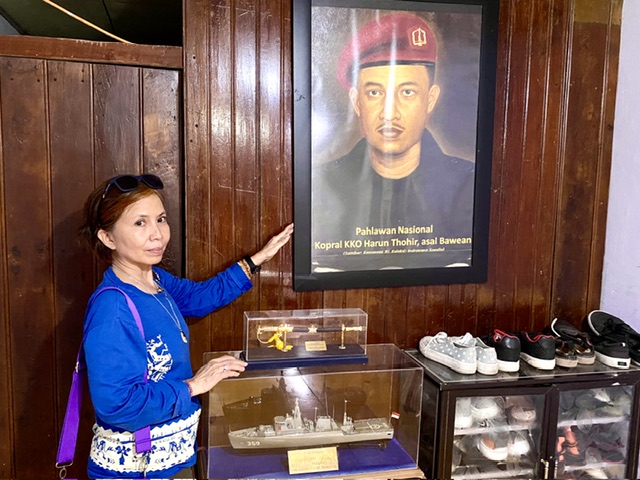
Harun Thohir: A Hero from Bawean Island
The house where national hero Harun Thohir grew up is located within the same complex as the Waliyah Zainab Mosque, just a few meters away from the home of the Head of Diponggo Village, Muhammad Salim. He was not at home when we arrived. We were accompanied by neighbors of the Harun Thohir family to visit the simple white-painted brick house, which was locked. The house’s design reminded me of old houses found in Java. It seemed that the house had been abandoned for a long time, and there was not much furniture inside. Several posters of Harun Thohir were affixed to the walls. All photos and objects related to Harun Thohir are kept at the Head of Diponggo Village’s house. “On National Heroes’ Day last year, a group of elementary school students came here,” one of our guides told us.
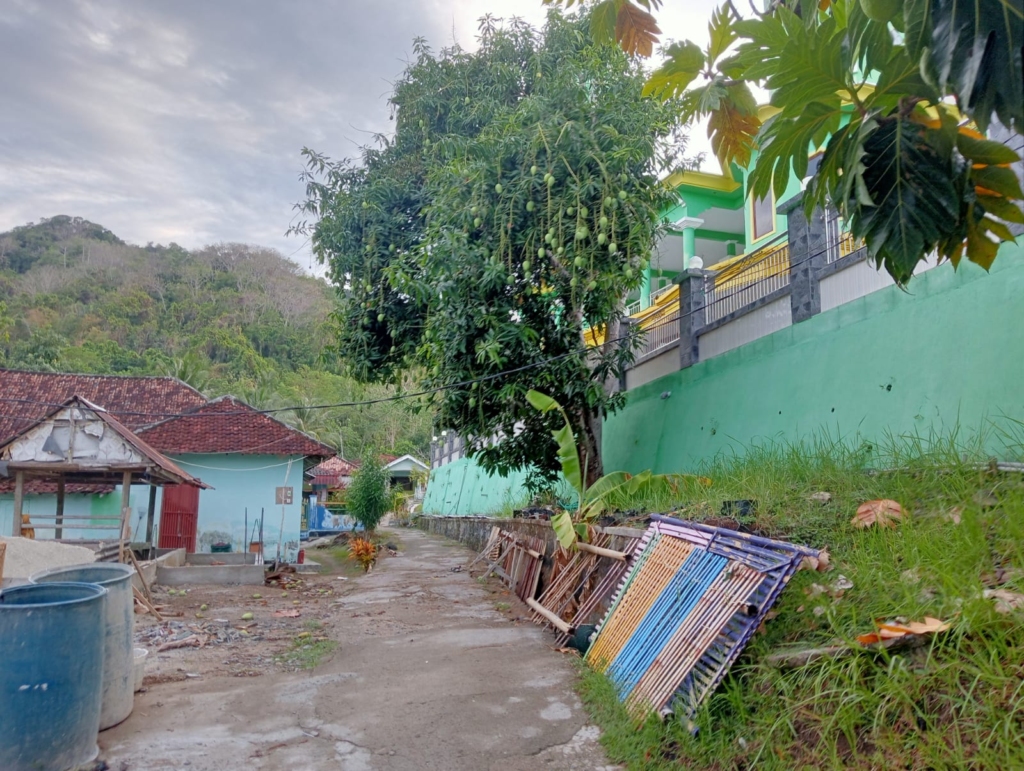
In this spacious house Harun Thohir was born, and his extended family once lived. His father, Mahdar, was from Mandar, South Sulawesi, while his mother was from Bawean. “His real name was Tahir bin Mahdar; Harun bin Said was his alias (when he was assigned to carry out the operation),” said Muhammad Salim, who is Harun Thohir’s nephew, in a phone conversation with me.
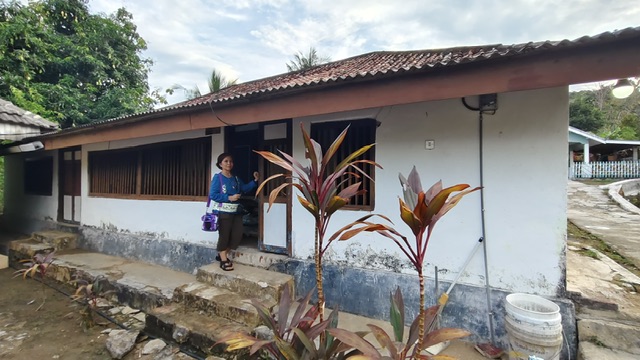
About five years ago, there was talk of turning the house into a museum by the Gresik Regency Administration. However, Harun Thohir’s extended family objected. They feared that if the local government built a museum, the land would be seized.
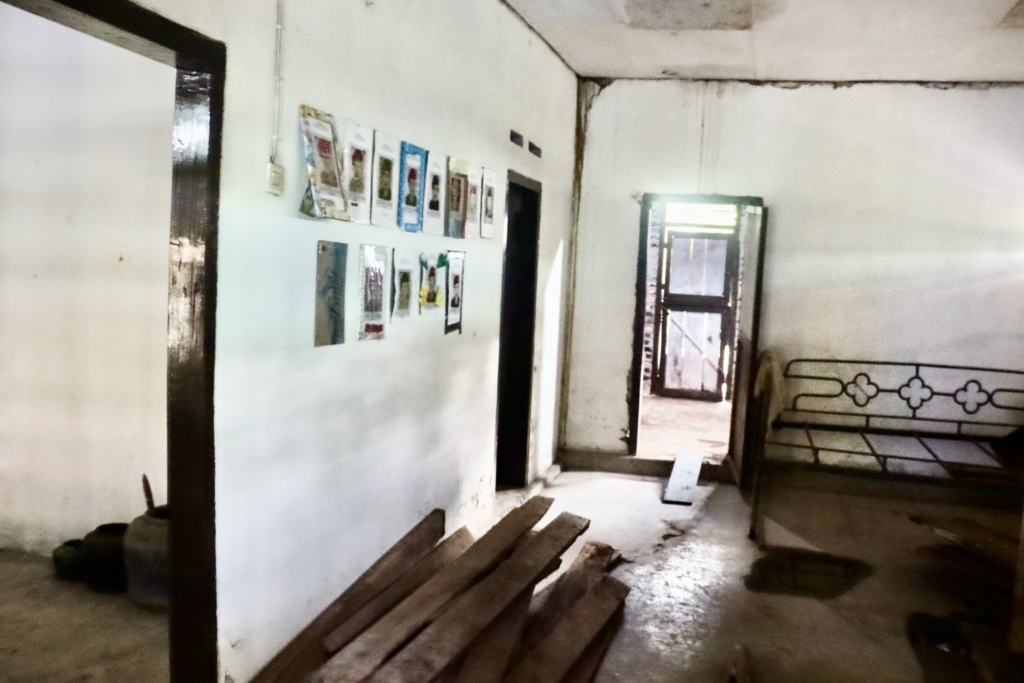
“As a child, Harun was difficult to manage and very brave. When he got upset, he would sleep in the public cemetery next to Waliyah Zainab’s tomb, as well as when he skipped his Quran lessons,” said Muhammad Salim. He heard the story of his uncle from his family.
According to him, his family received compensation from the government for Harun Thohir’s sacrifice. While his grandmother (Harun Thohir’s mother) was still alive, the government gave her a house in Lagoa, North Jakarta—which has since been sold—and provided her with a monthly allowance, as well as sponsored her trip to Mecca for Hajj. Harun’s father and mother were also invited to Jakarta to attend the Heroes’ Day ceremonies on November 10 from the era of President Soeharto to President Megawati. “We were always invited to the Marine Corps anniversary on November 15, whether to Surabaya or Jakarta,” said the man who has served as the Head of Diponggo Village since 2013.
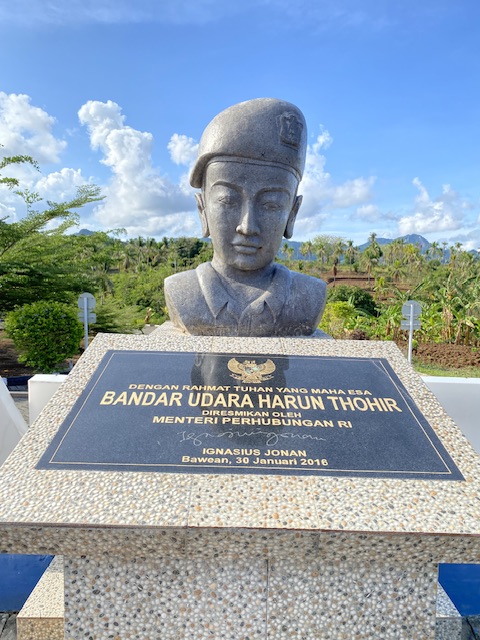
The house where Harun Thohir was born certainly needs repairs and arrangement if it is to be used as an educational tourist destination. The Harun Thohir family does have plans to turn the house into a small museum. “We need to discuss it first. We will fix it slowly,” added Muhammad Salim. The name of Harun Thohir has been immortalized in the name of an airport on Bawean Island: Harun Thohir Airport.
To be continued
